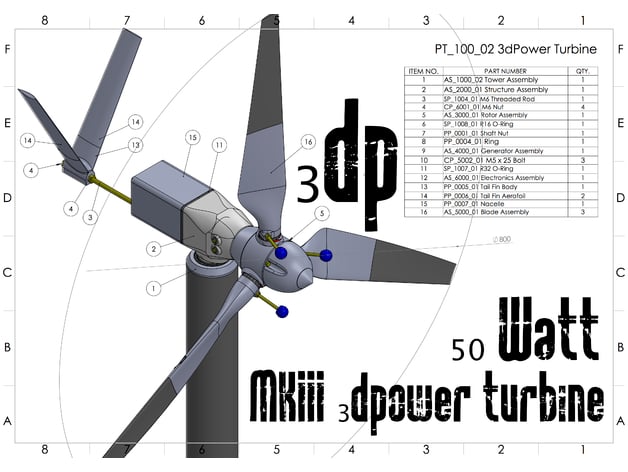WinD-E
Will Greenbaum Environmental Grant — Wind Turbines

How The Wind Turbine Works

Engineering & Physics Perspective
We all know that the point of a windmill is to “create” energy, but as science teachers love to tell us, energy cannot be created or destroyed; so how does this windmill work? A windmill simply changes what kind of energy is present. The wind moving has linear kinetic energy since it’s moving in a straight line, the wind pushes the windmill blades, making rotational kinetic energy. The blades then turn a generator, which turns metal coils around a magnet, creating an electric field, producing electric energy!

Environmental Science Perspective
In the real world, wind turbines positively affect the environment. Wind turbines are an excellent source of clean, renewable energy, producing electricity without emitting greenhouse gases or pollutants that contribute to climate change. By harnessing the power of wind, they help reduce our reliance on fossil fuels, mitigating air pollution and improving air quality in the process. Additionally, wind turbines have a minimal ecological footprint and can be installed on various types of land, preserving natural habitats and biodiversity.
Manufacturing Process
What is 3D Printing?
- Form of additive manufacturing
- Construction of a three-dimensional object from a digital 3D model
- General Premise: Building up layer upon layer of molten plastic
- Thin “string-like” plastic is spooled that is then extruded through a hot end which melts the plastic.
- This molten plastic extrudes into an extremely thin string that builds the layers.
- A digital file is needed that tells the 3D printer where to print the material.
- This file contains ‘coordinates’ to guide the printer’s movements along the X, Y, and Z axes

3D Printing the Turbine
- A 3D model of a pre-existing wind turbine was used as the preliminary baseline for the model we wanted to create.
- Realizing the shortcomings of the original model–which included the size, complexity, and motor compatibility–we modified the model to be suitable for our needs.
- This model was then optimized for our 3D printers, and it was printed soon afterwards (SEE VIDEO).

Project Timeline
Grant Proposal Submitted
Technical Meeting
Turbine Parts Printed
Meeting With Will Greenbaum
Turbine Revision
Communications Office Coordination
Wind Turbine Completed
Initiative Continuation
About Us

Darby Lee-Stack
Darby is a senior at D-E who is very interested in environmental studies. She mostly worked on graphics and communications for the WinD-E project and is very excited for the final outcome.

Sujan Munver
Sujan enjoys skiing, doing robotics, and playing tennis. He looks towards making the world a better place in whatever way possible – big or small. He will be attending Cornell University’s College of Arts & Sciences next year.

Ben Labib
Ben Labib is interested in physics, which motivated him to attend Stevens Institute of Technology to study Biomedical Engineering. Outside of the classroom, he enjoys doing Robotics, watching soccer and listening to music.
